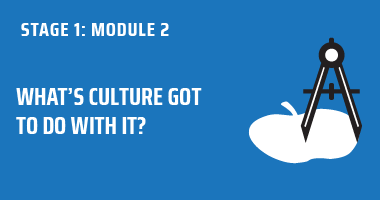Module 2: What’s Culture Got to Do With It?
TIMING: You’ll spend a minimum of 1 weeks in this module after completion of Lesson 1. Watch video to end.
By the End of this Module…
You will have new language and mental models for talking about culture.
You will be able to better distinguish between operating from a bi-cultural lens and stereotyping.
You will begin to understand the ways that the cultural norms of individualism and collectivism show up in your context.
You will continue to cultivate the conditions for an intellectually-safe classroom using culture as an affective (social-emotional) lens.

LESSONS IN THIS MODULE
OVERVIEW
In Chapter 2 of Culturally Responsive Teaching and the Brain, I posed a question: What’s culture got to do with it? Too often it’s this concept of culture that gets us tripped up when implementing culturally responsive practices. Educators come to this equity work with a very shallow understanding of “culture,” especially if they are White and come from the dominant culture. But even people of color don’t always have a nuanced understanding of the denotation of the word. Instead, we come to it with a lived experience around navigating between two (or more) cultural orientations grounded in our racial, ethnic, and linguistic differences.
Instead, we lead culturally responsive practices with misconceptions that lead to, at the very least, a misguided application in practice or, at worst, harmful approaches that are actually stereotypes and microaggressions.
In order to avoid this, we have to get better at understanding and talking about culture in ways that allow us to use it as both an affective (social-emotional) filter to create intellectually-safe classrooms and a cognitive scaffold to accelerate learning.
So this module is going to be our first pass at deepening our understanding of culture. As we progress, we will be returning to the concept of culture as a lens to select structures, practices, and routines that align with students’ own ways of being and doing as they move through learning. In addition, for majority students, these practices will support efforts to meet education standards around cultural competence for them as part of 21st century skills.
Save to My Content
